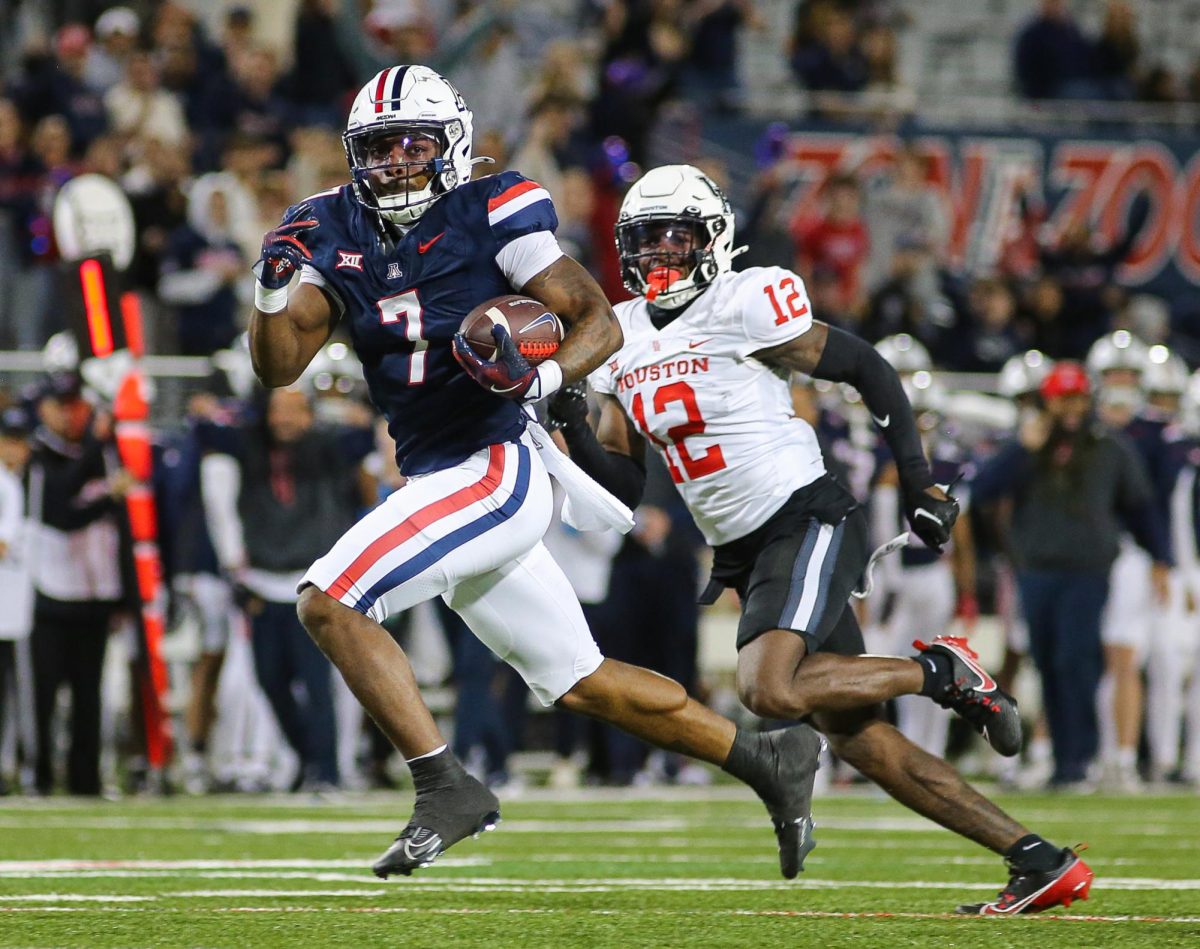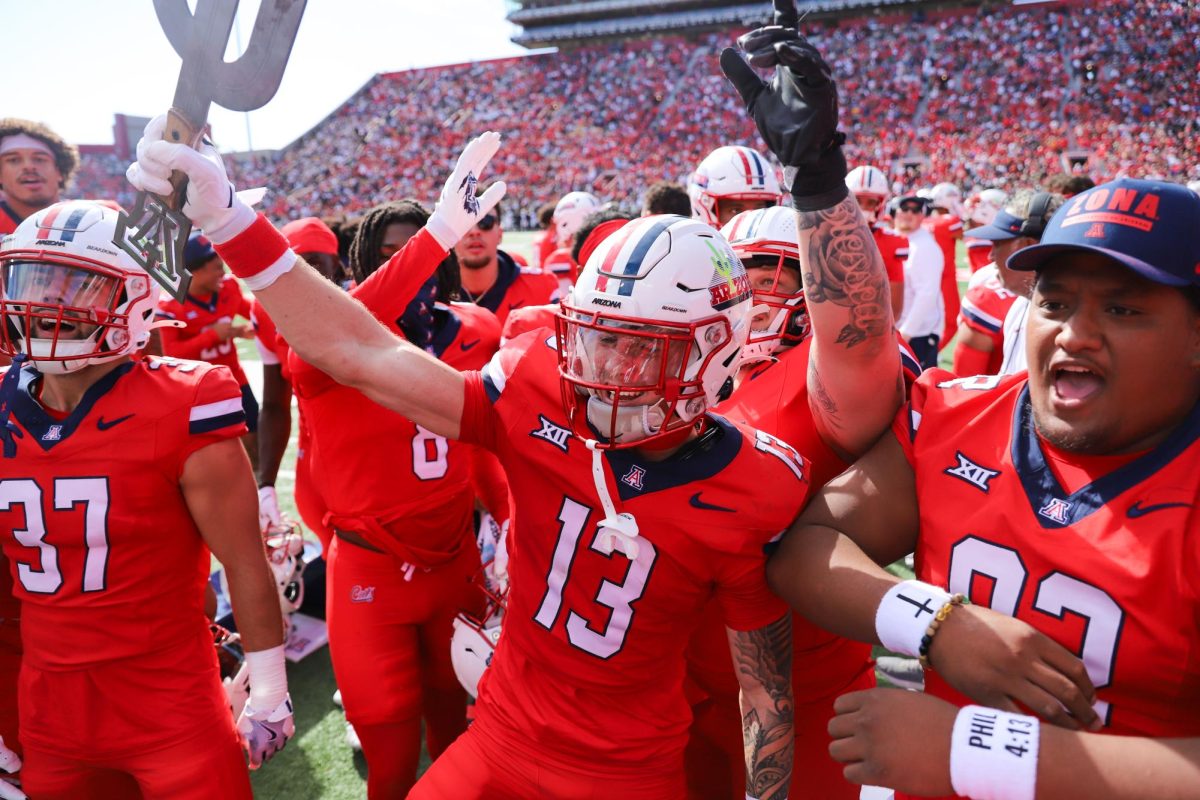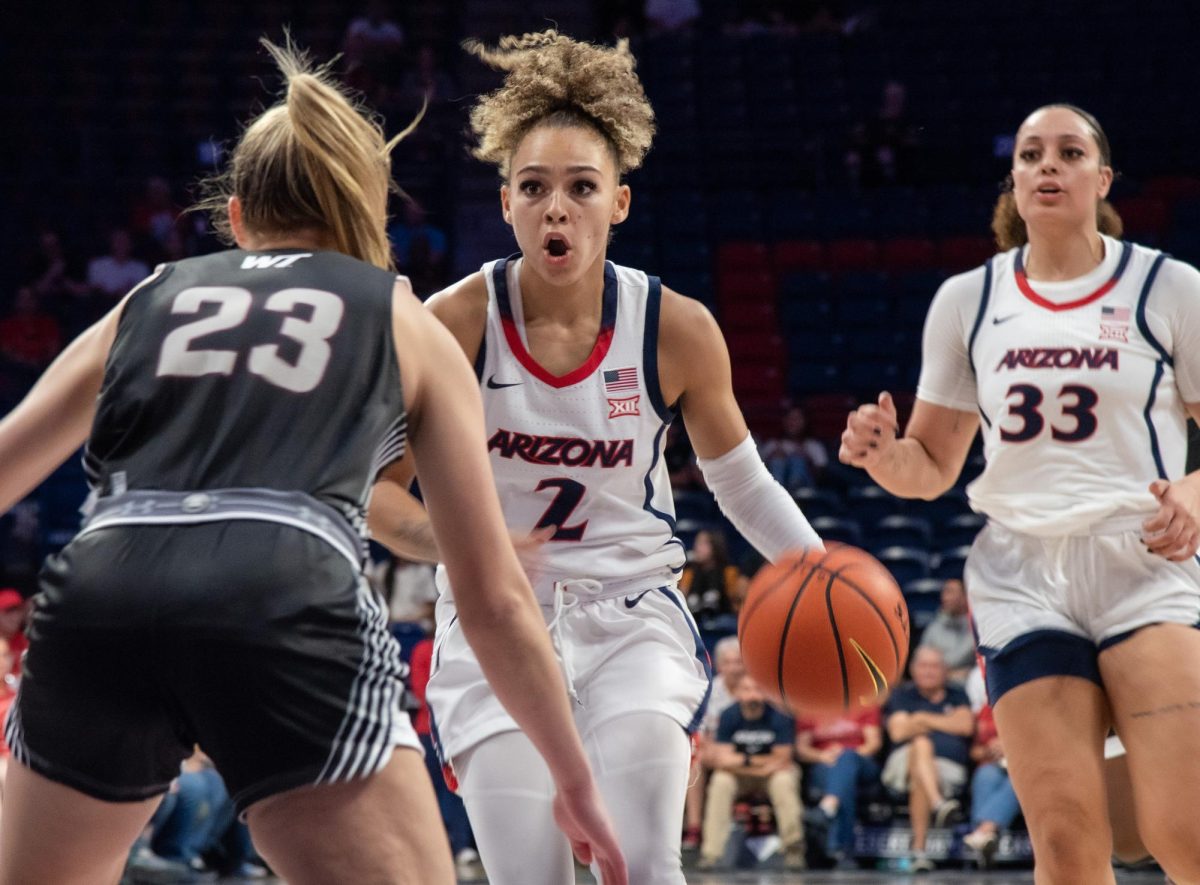At face value, it seems that the College Football Playoff committee succeeded in compiling their end of season rankings. However, that’s not entirely the case.
Alabama and Clemson dominated their opponents in their respective semi-final games. The Crimson Tide stole a 28-0 lead against the nation’s top-ranked offense in the Orange Bowl, eventually sealing a convincing 45-34 victory over Heisman Trophy winner Kyler Murray and the Oklahoma Sooners.
In the Cotton Bowl, Clemson’s highly touted defensive line overpowered and humiliated the undefeated Notre Dame Fighting Irish to a tune of 30-3. Rather than looking overwhelmed, the Tigers’ true freshman quarterback, Trevor Lawerence, played lights out and looked at ease under the mega jumbotron in AT&T Stadium.
RELATED: DeMarco Murray set to be new UA football running backs coach
It’s simple to suggest that the disparity between the final teams standing and every other school across the country is so great that a competitive four-team playoff was out of question this season, but that would be doing a disservice to each team that exceeded expectations this year and proved their ultimate worth during the Bowl season.
Powerhouse programs like Texas, Florida and Washington State were all discarded from the playoff discussion despite clearly being capable of competing with the nation’s top teams. Ultimately, all three schools prevailed in dominant fashion in the postseason. No. 15 Texas never surrendered it’s lead against No.5 Georgia en route to a 28-21 victory. The Longhorns final resume included wins against the nations 4th and 5th ranked teams. That’s a compelling case if you ask me.
Florida and Washington State were also robbed of a higher final ranking thanks to a collection of close defeats during the regular season. The No. 10 Gators ended up stomping No. 7 Michigan, 41-15, while the Cougs held off a rally from an underrated Iowa State team. In hindsight, all three programs could have served as stronger competition than an unproven Notre Dame squad and an atrocious Sooners defense.
Ever since the College Football Playoff replaced the long-standing BCS National Championship, teams that don’t meet every aspect of the committee’s criteria have struggled to make their case for finishing higher in weekly rankings, as well as potentially earning a seat in the current four-team playoff system.
Over the last five seasons, Alabama and Clemson have dominated the playoff in a manner that no other team has come close to replicating. Nick Saban and Dabo Swinney have catapulted their school’s football programs to a level that is nearing untouchable, not to mention increasingly impossible to dethrone.
Each year, a 13-member Playoff Selection Committee works diligently to compose a list of the country’s top football teams. Based upon a combination of weekly analysis, performance under specific circumstances and results in key games, the committee votes on which teams should rank above the others, and ultimately who should be left out of the playoff discussion.
The issue with the system, however, is seen throughout the Bowl season, leading up to, and immediately after, the semi-final games. The bottom-line is that it’s incredibly difficult to judge a team’s success against any opponent, until they’ve faced one another. Instead of focusing on eliminating the teams that fell short of specific criteria – winning a conference championship or sporting a perfect record – the committee should create a playoff format that is based primarily on performance against ranked opponents that would also account for teams having an off-day.
As evident as it is in the NFL that any team can win on any given Sunday, college football is very much a similar display. Of course, at a certain point there is a talent gap between teams in each conference, but in order to determine the nation’s very best, it’s necessary to give those elite programs the chance to showcase their abilities in a win and advance environment.
That’s why a 12-team playoff format is the best-case scenario for the future of college football.
In a perfect world, a 25-member selection committee – with no affiliation to any specific football program –would vote on a weekly basis, ranking the nation’s top 25 teams. By season’s end, those weekly rankings would be nothing more than table-side conversation and online entertainment.
Instead, the playoff would be formulated by utilizing a combination of overall ranking and success against conference opponents.
The 12-team race would be comprised of the two highest-ranked teams from each Power 5 conference, as well as 2 at-large bids, which would be awarded to the two teams that finish highest in the final poll, regardless of which conference they participated in. This would allow independent programs like Notre Dame, and Group of Five contenders like Central Florida to vie for a playoff spot, despite playing a much weaker schedule throughout the season.
Although the 2019 National Championship featured two teams tabbed by experts as the elite of the elite, it’s not exactly a bout between the country’s most deserving teams.
Alabama and Clemson have each had their scares this season, just like they did every other year they’ve faced each other on college football’s biggest stage.
I’m not saying that the old BCS National Championship system was any better, but it’s safe to say that the relatively new four-team playoff isn’t getting the job done either.
A 12-team playoff format that highlights the success of teams within the Power 5 conferences would be the justice that the college football postseason deserves.














